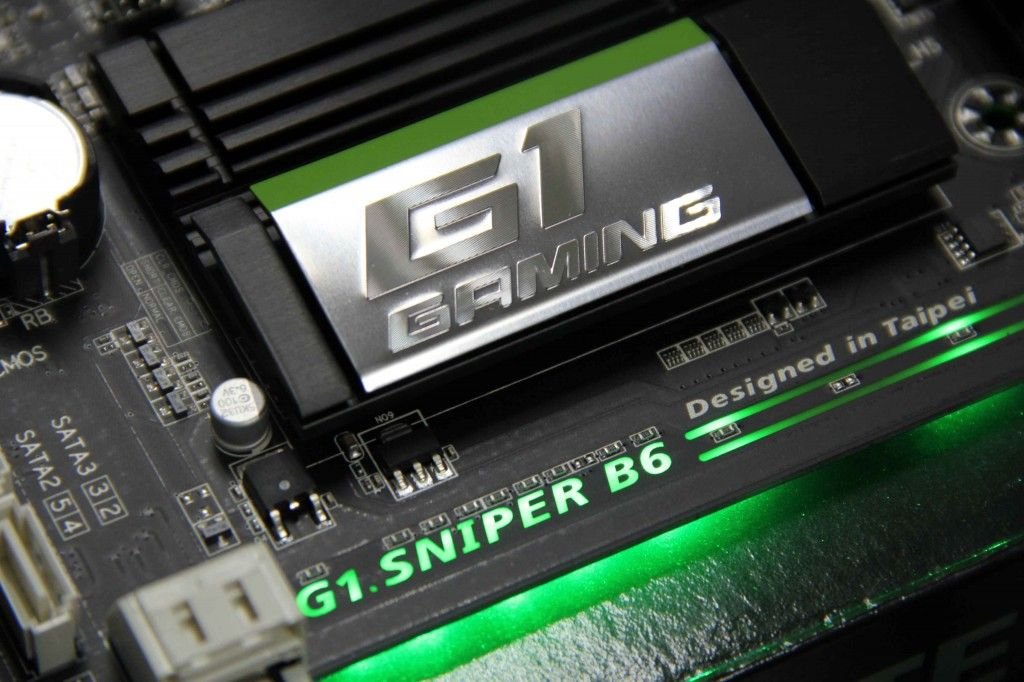
We promised you guys a while back with an overview of the latest B85 motherboards, and now we have the second entry in the list, the Gigabyte G1.Sniper B6. Though one can be misled by the name, this motherboard houses a B85 chipset and is Gigabyte’s follow-up to their G1.Sniper B5. This motherboard is also the youngest one in the pack, being announced less than two months back.
Again, this B85 review will be of a more of an overview rather than an in-depth one. We want to concentrate more on the ‘gamey’ feel rather than the nitty gritty numbers. As a bit of disclaimer, we will not overclock the board.
The G1.Sniper was just announced last September and the upgraded looks, hardware, and the overall feel of the board made headlines around international tech sites. Since it houses an Intel B85 chipset, the capabilities of this motherboard is limited, but is more than enough to function as an adequate gaming component. The major differences between the G1.Sniper B6 and G1.Sniper B5 are the inclusion of an M.2 socket, a more formidable audio solution, and more integrated graphics output ports.
Compared with ASUS’ B85-Pro Gamer, the Gigabyte G1.Sniper B6 makes the user feel more special with the bundles of love included in the package. The added extras may mean nothing to some but it sure does beat the Spartan packaging of some affordable boards.
The set inside the packaging, a set of stickers and straps for wire management, a stainless steel I/O, a driver disc and a manual, and two pairs of silver SATA cables. Yes, the silver SATA cables messed things up in our opinion.
In terms of aesthetics, we all agreed that this is one fine looking motherboard. The green and silver combo is put into good use and is highlighted with the design of the heatsinks.
If you’re into modding or would want to be into modding without high-end parts taxing your wallet, then we highly suggest that you try your initial stint with the G1.Sniper B6. This is definitely greener and far better designed than the B5. The good thing about all of this is that the LED located around the board light up during operation. Call us shallow if you wish, but there’s no denying that this is one sweet looking motherboard.
For the back I/O, we have pretty standard stuff, sprinkled with Gigabyte love. We have two yellow USB ports for streamlined USB power delivery, and a PS2 port. For visual output, we have a VGA, DVI, and HDMI ports, which are far more than the G1.Sniper B5. Next along the line is gold-coated USB 2.0 port for noise-free power delivery to audio DACs. The bottom part of the I/O is home to two USB 3.0 ports, an RJ45 socket for networking, an SPDI/F, and 5 audio ports.
Trying the G1.Sniper B6’s BIOS woke us up to the fact that motherboard companies can cram too much information in just one single thing. Is it good? Yes it is, only if it is not overdone. The only qualm that we have with this boards’ BIOS is that it is too text heavy. With the textual annoyances aside, the BIOS is fully functional, giving the user the ability to tweak most, if not all, of the insides of the board together with the attached component. If you wish to configure, prepare yourself for some menu hunting as navigating will certainly take much of your time.
In terms of software, we have to be honest that we are not expecting that much from a Gigabyte motherboard. With the tools and programs that we tried below, you can judge if our opinion can be translated to fact.
Still looking for that familiar Windows button at the lower-left side of your screen? Look no further! Gigabyte has the solution, carefully embedded in the loving arms of your driver disk. A very simple but useful tool especially if you’re a first timer with Windows 8. Sadly, we had this application crashing on us during testing (we were using Windows 8.1 at that time).
This is Gigabyte’s one-stop menu for their tools. As an unobtrusive UI, this pretty much welcomes user to the Gigabyte experience. The sad thing however, is that you have to access these different tools in order to get an overall feel or data about your PC, instead of it collating everything into one program.
Undoubtedly, this is the only gaming centric feature of this board. This tool enables macro keys and high sensitivity for mouse. Unlike the ASUS’ ROG Keybot (which is priced wayyy higher), this is done on software level with the toll being taken by the processor and the RAM. Pretty good if you wish to have a standard mouse sensitivity in your PC’s overall environment.
Though it may not be the gamer motherboard that we need, it certainly is the gaming motherboard that we want – that is in terms of physical appearance. The LED lightings and the green and silver theme gives a very high-end feel. Getting this board will more than likely grant you additional stares and winks (hopefully). Again, if you’re into modding or would want to try the craft, best take this one first.
The features are pretty standard and gaming-wise, we sadly cannot find anything to share or be proud of using. The Game Controller left us at a state of meh, showing and offering nothing significant and worthwhile. The tools and software solutions could have been more streamlined and improved with a more easy-to-use, all-in-one program.
One thing to consider in buying this board is the M.2 support. M.2 is a new standard meant to break through the 6Gbps bottleneck offered by SATA ports by offering up to 10Gbps bandwidth, though it has to cut the speed of the other PCIEx16 to PCIEx2. Another thing to consider is the dual BIOS. If you’re into cracking your motherboard with extreme numbers (and forgetting that this is of Intel’s B85 chipset), then you’d best consider this board.
The Gigabyte G1.Sniper B6 has an SRP of Php 5,100 and is already available at your local motherboard retailer.
| CPU |
(Please refer “CPU Support List” for more information.) |
| Chipset |
|
| Memory |
(Please refer “Memory Support List” for more information.) |
| Onboard Graphics | Integrated Graphics Processor – Intel® HD Graphics support:
|
| Audio |
|
| LAN |
|
| Expansion Slots |
|
| Multi-Graphics Technology |
|
| Storage Interface | Chipset:
|
| USB | Chipset:
|
| Internal I/O Connectors |
|
| Back Panel Connectors |
|
| I/O Controller |
|
| H/W Monitoring |
|
| BIOS |
|
| Unique Features |
|
| Bundle Software |
|
